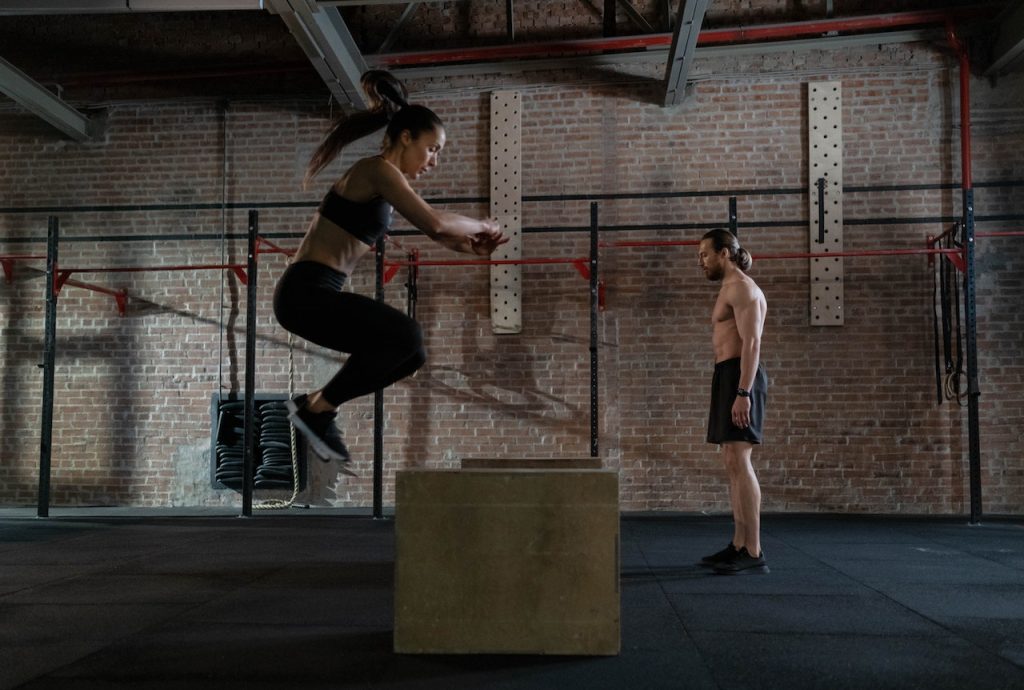You’ve heard the saying, right? “Jump and you will find out how to unfold your wings as you fall.” Now, let me pose a somewhat cheeky question. What if we could use this philosophy, not in the context of personal growth but, get this – physical fitness? Well, say hello to plyometric workouts!
What in the world are plyometric workouts? you may ask. Let’s leap straight into it, shall we?
Table of Contents
ToggleWhat are Plyometric Workouts?
In the land of fitness, where every workout routine seems like a grueling mountain to climb, plyometric exercises come in like a breath of fresh air, or more accurately, a leap of adrenaline. Coined from the Greek word “pleythyein,” which means “to increase,” plyometrics are exercises that involve rapid stretching and contracting of the muscles, designed to increase strength, speed, and power.
Picture this, a gymnast taking flight off a vault or a basketball player making that final, explosive leap for a slam dunk. These are real-world examples of plyometrics at play, where muscles exert maximum force in the shortest amount of time.
The Magic Behind Plyometrics
Why all the hype around plyometrics?
One word – power! Plyometric training primarily targets the fast-twitch muscle fibers. These are the brawn behind our ability to perform fast and powerful movements. Unlike their slow-twitch counterparts, fast-twitch fibers fatigue quickly but are essential for high-intensity, short-duration activities.
Imagine this: You’re a sprinter, seconds away from the race of your life. The gunshot sounds. Your heart is pounding. And then, with a burst of energy, you’re off! That’s the power of fast-twitch muscle fibers. That’s the magic of plyometrics.
Benefits of Plyometric Workouts
From weight loss to muscle building and improved performance, the benefits of plyometrics are as diverse as they are impressive.
- Weight Loss: Plyometrics are high-intensity exercises that increase your heart rate, boost metabolism, and torch calories. Can you hear that? That’s the sound of your fat cells crying for mercy!
- Muscle Building: These exercises involve the whole body and, hence, are an excellent tool for gaining muscle.
- Enhanced Performance: Plyometric training can significantly enhance your athletic performance by improving your power, strength, and speed.
A Beginner’s Guide to Plyometric Workouts
Now that we’ve piqued your interest, let’s jump (pun intended) into some beginner-friendly plyometric exercises you can try today.
- Jump Squats: Begin with a standard squat, and then explode into a jump, landing softly to go straight into the next squat.
- Box Jumps: Just as it sounds, this exercise involves jumping onto a sturdy box or raised platform, then jumping back down.
- Burpees: Start in a standing position, quickly get into a squat, kick your feet back into a push-up position, return to the squat and explode into a jump.
Remember, it’s essential to warm up before these exercises and cool down afterward to avoid any injury.
Taking It Up a Notch
Just like the magical world of Alice’s Wonderland, plyometric workouts unfold further down the rabbit hole, revealing advanced exercises that can add an extra layer of challenge and efficacy to your training regime. As you grow stronger and more confident in your plyometric abilities, it’s time to push your boundaries and achieve even greater fitness milestones.
But, let’s be honest. The road to advanced plyometrics isn’t always a walk in the park. Are you ready to rise to the challenge?
Depth Jumps
If you’re looking for a plyometric exercise that screams intensity, depth jumps are your go-to. This workout is designed to tap into your body’s natural reflexes and improve your reactive strength, essentially enhancing your ability to change from an eccentric (muscle lengthening) to a concentric (muscle shortening) contraction quickly and powerfully.
Here’s how it’s done:
- Stand on a box or platform around 30-60cm high.
- Step off the edge, not jump, just a simple step-off.
- As soon as you touch the ground, explode upward, jumping as high as you can.
- Land softly with your knees slightly bent.
Sounds simple enough, right? But don’t be fooled by the simplicity. The true challenge of depth jumps lies in the speed of the reactive jump after landing. Remember, the goal is to spend the least amount of time on the ground before exploding back up into the jump.
Single-Leg Bounds
If depth jumps are the king of plyometric exercises, then single-leg bounds are undoubtedly the queen. This exercise not only enhances your leg power and speed but also improves your balance and unilateral strength – a vital component of athletic performance that’s often overlooked.
In essence, single-leg bounds involve explosive forward jumps on one leg. They’re a bit like bounding leaps, where you strive for both distance and height. Here’s how to perform them:
- Start by standing on one foot.
- Bend your knee and push off your foot, leaping forward as far as possible.
- Land on the same foot, maintaining balance and composure.
- Repeat the jump sequence on the same foot for the desired number of reps.
While performing this exercise, your aim is to jump as far and as high as possible, while also maintaining a rhythm. It’s almost like a dance, where the floor is lava, and your objective is to avoid spending too much time on the ground.
Pushing Your Limits with Advanced Plyometrics
Advanced plyometric exercises like depth jumps and single-leg bounds can propel your fitness journey to new heights. However, it’s crucial to approach these exercises with caution and patience. Rome wasn’t built in a day, and neither is athletic prowess.
Ensure that you’ve mastered the basics of plyometrics before stepping into the advanced territory. And remember, despite the increased intensity and challenge, the fundamental principles of plyometrics still apply – precision, control, and most importantly, safety.
Key Takeaways:
- Advanced plyometric exercises like depth jumps and single-leg bounds can significantly enhance your power, speed, balance, and unilateral strength.
- These exercises demand greater intensity and control, making them ideal for those who have mastered the basics of plyometrics.
- Despite the increased challenge, the essence of plyometric training remains the same – maximum force, minimum time.
So, are you ready to leap beyond the ordinary and embrace the extraordinary world of advanced plyometrics? Remember, every giant leap begins with a small step… or rather, a powerful jump!
Conclusion
In the fitness arena, plyometric workouts are the secret weapon for those looking to lose weight, build muscle, and get in better shape. So why wait? Leap into your fitness journey with plyometric workouts today!
Remember, the journey of a thousand miles begins with a single step—or in this case, a jump! So, are you ready to make the leap towards your fitness goals?





